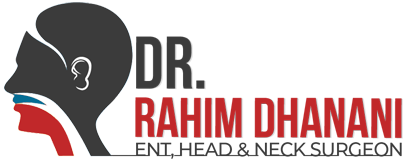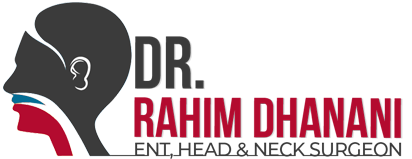What is obstructive sleep apnea (OSA)?
Obstructive sleep apnea (OSA) is a condition in which there are brief pauses in your child’s breathing pattern during sleep. Breathing usually stops because there is a blockage – or an “obstruction” – in the airway. OSA occurs in up to 2%-5% of children and can occur at any age. It is most commonly seen in children between the ages of 2 and 6 years old.
Sleep apnea results in many brief awakenings from sleep when the brain senses changes in the oxygen or carbon dioxide in the body and send signals to the lungs to try to get a breath in. These awakenings are brief and sleep resumes right after. To put it differently, it is like hearing the telephone ring once in your sleep and then stop. You may not even get up to reach for the phone but your sleep is interrupted briefly. Now imagine this happening over and over again throughout the night! Although your child may not be aware he or she is waking up, these interruptions in sleep can lead to daytime problems.
What causes sleep apnea?
The most common cause of sleep apnea in children is enlarged tonsils and adenoids (large relative to the child’s airway) that block the airway and obstruct breathing during sleep. During the daytime, muscles in the head and neck more easily keep the airway passages open. During sleep, muscle tone decreases, allowing tissue to come closer together and these large tonsils and adenoids tend to block the airway for periods of time. Other tissues in the nose, neck and the tongue also contribute.
Other causes of OSA include:
- Obesity
- Narrow facial bone structure
- Retrognathia (small jaw)
- History of cleft palate or pharyngeal flap surgery
- Low muscle tone (hypotonia, as in neuromuscular diseases)
- High muscle tone (as in cerebral palsy)
- Tumor or growth in the airway (rare)
Sleep apnea also occurs more commonly in children with syndromes that alter the facial structure such as Down syndrome. Other children who may be at greater risk for developing OSA include those with nasal allergies, asthma, stomach acid reflux, and frequent upper airway infections.
What are the signs and symptoms of obstructive sleep apnea?
- Loud or noisy breathing, snoring, or mouth breathing during sleep
- Brief pauses in breathing during sleep or difficulty breathing during sleep
- Restless sleep (i.e., lots of tossing and turning)
- Sweating heavily during sleep
- Bedwetting
- Sleeping in odd positions (e.g. neck hyperextended)
- Inattentiveness and lack of focus at school
- Excessive daytime sleepiness (e.g., child regularly falls asleep in school)
- Poor academic performance
- Irritable mood, aggressiveness, other behavioral problems (hyperactivity)
- Growth issues (Severe OSA can lead to failure to thrive.)
- Morning headaches
How is obstructive sleep apnea diagnosed?
Once your child’s physician suspects sleep apnea, he or she may recommend that your child be seen by a sleep specialist. In addition to a complete medical history and physical examination, a sleep specialist may conduct the following tests to determine if your child has sleep apnea:
- Sleep history: A report of your child’s nightly sleeping pattern.
- Upper airway evaluation: By instrument evaluation and/or by x-rays.
- Sleep study (also called a polysomnogram): This test is usually conducted in a specialized bedroom in a sleep laboratory with an adult caretaker (usually a parent) nearby. It measures your child’s brain activity, heart rate, amount of air flow through the mouth and nose, oxygen and carbon dioxide content in the blood, muscle activity, chest and abdominal wall movement and sleep interruptions. A technician is present throughout to trouble shoot and replace sensors should the child take them off. The sleep study does not hurt and does not involve needle sticks. Sometimes a similar “mobile” bedside study may be recommended if your child is very sick and is in the hospital.
How is obstructive sleep apnea (OSA) treated?
Sleep apnea is treated in one of four general ways, depending on the cause of the obstruction. Treatment options include:
- Surgery: Removal of enlarged tonsils and adenoids (enlarged tonsils and adenoids are the most common cause of OSA in children). Other types of surgeries may be needed in children with structural abnormalities of their head and neck area. For example, a dental or facial surgeon may be able to adjust the position of poorly aligned teeth or the small jaw and thus create more room in the airway.
- Lifestyle modification: Weight loss (through diet and exercise) may be helpful in the management of OSA in overweight children.
- Medications: Medications may sometimes be helpful in keeping airways clear or opening airways. Examples of such medications include fluticasone (Flonase®) and montelukast (Singulair®).
- Continuous positive airway pressure (CPAP): CPAP involves wearing a mask over the nose during sleep. The mask is attached to a small portable machine that blows air through the nasal passages and into the airway. The air pressure generated by the machine keeps your child’s airway splinted open and allows him or her to breathe normally during sleep.





